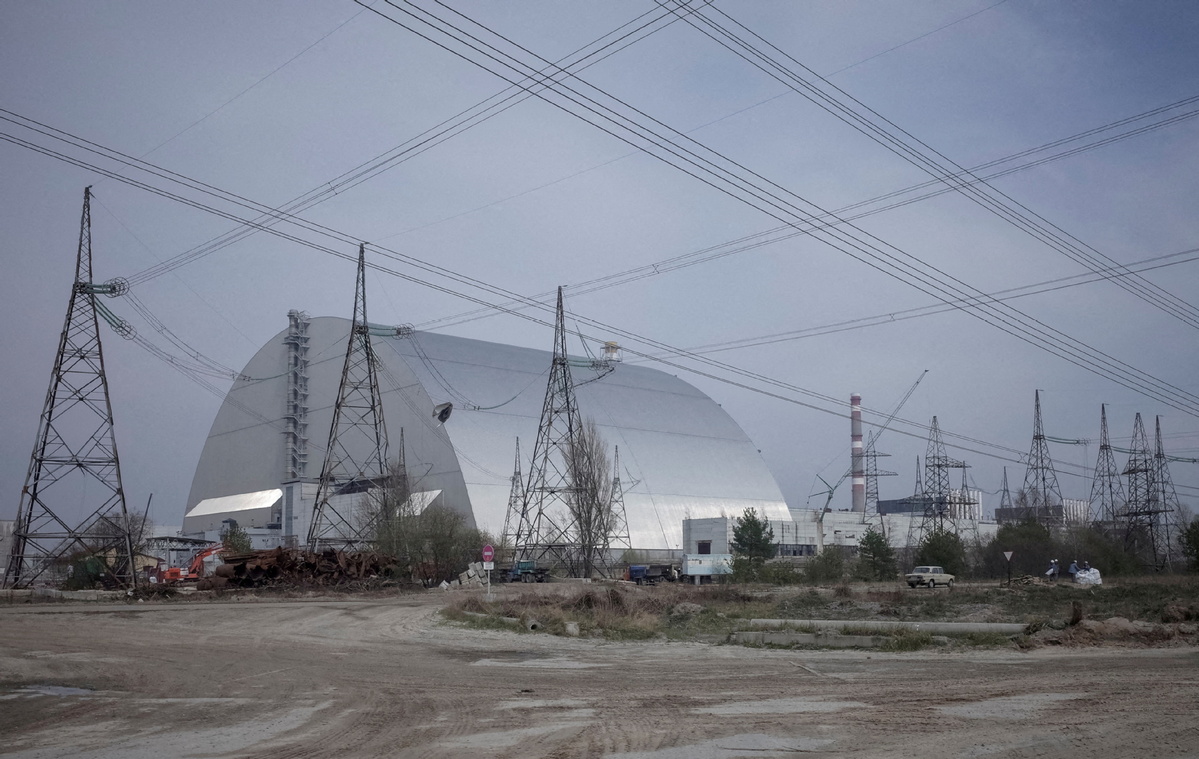
FILE PHOTO: A general view shows the New Safe Confinement (NSC) structure over the old sarcophagus covering the damaged fourth reactor at the Chernobyl nuclear power plant, in Chernobyl, Ukraine, April 5, 2017. [Photo/Agencies]
On April 26, 1986, a series of explosions ripped through the Chernobyl Nuclear Power Plant in Ukraine, then part of the Soviet Union. The ensuing radioactive fallout spread across Ukraine, Belarus and Russia, with significant impact felt in other European countries.
The immediate aftermath saw dozens killed and hundreds of thousands forced to evacuate, and the long-term death toll from radiation exposure remains uncertain.
International Chernobyl Disaster Remembrance Day falls on April 26, a day ratified by the United Nations to remember the victims and survivors of Chernobyl, the worst nuclear accident since the beginning of the nuclear age.
Decades later, however, concerns over nuclear power have only intensified because of events such as the 2011 meltdown at Japan's Fukushima Daiichi Nuclear Power Plant, triggered by a massive earthquake and tsunami.
In August, the discharge of nuclear-contaminated water from the crippled Fukushima plant into the Pacific Ocean began, raising the staunch opposition of Japanese citizens and neighboring countries. Experts have also raised concerns about the potential long-term risks to marine life and human health.
Earlier this month, Russia and Ukraine traded blame for attacks on Europe's largest nuclear power plant in Zaporizhzhia, raising global alarm. The International Atomic Energy Agency said it was the first such incident at Zaporizhzhia since November 2022 and the world was put "dangerously close to a nuclear accident".
"Such reckless attacks significantly increase the risk of a major nuclear accident and must cease immediately," IAEA Director-General Rafael Grossi said."Attacking a nuclear power plant is an absolute no-go."
While the discovery of the atom and the subsequent development of nuclear energy have given a new impetus to the progress of humanity, the utilization of such energy has associated risks.
China holds a rational, coordinated and balanced nuclear safety strategy in harnessing nuclear power and properly responding to the challenges it poses.
At a United Nations Security Council meeting on the safety of nuclear facilities on April 15, Geng Shuang, China's deputy permanent representative to the UN, highlighted the significant challenges and threats posed to the Zaporizhzhia facility by the Russia-Ukraine conflict.
"We once again call on the parties concerned to strictly comply with the Convention on Nuclear Safety and other relevant international laws, refrain from any action that could endanger nuclear facilities and work resolutely to prevent human-made nuclear accidents," he said.
Climate change risks
Climate change has also heightened the risk of maintaining earlier built nuclear facilities, according to a recent report by the United States Government Accountability Office, which pointed out risks to nuclear power plants from more frequent natural hazards, including heat, drought, flooding and sea level rise.
"Most commercial nuclear plants in the US were built in the 1960s and 1970s, and weather patterns and climate-related risks to these plants have changed since their construction," it said.
Ensuring nuclear power in the safest pair of hands is of paramount importance to China. It is one of the world's largest producers of nuclear power with 55 nuclear reactors in use, generating 440,000 gigawatt-hours of electricity, according to the China Atomic Energy Authority.
Liu Jing, deputy director of the CAEA, said on Tuesday that the nuclear power generated in China accounts for 5 percent of the country's total electricity generation, which is equivalent to saving 130 million metric tons of coal and reducing carbon emission by 350 million tons.
China has an independent and complete nuclear industry chain and a secure and stable nuclear fuel supply, and has accumulated rich experience in the design, construction and operation of nuclear power plants, Liu said. Another 36 nuclear reactors have been approved or are under construction in China.
According to the World Association of Nuclear Operators comprehensive index, China's nuclear power operation safety performance has ranked among the top in the world for several consecutive years, and 33 nuclear power units in China won full scores in the association's comprehensive index last year.
China is expected to further expand its installed nuclear power capacity, which will account for 10 percent of its total power output in 2035, according to the blue book of China's Nuclear Energy Development 2024 released by the China Nuclear Energy Association.
A white paper, titled Nuclear Safety in China, published by the Information Office of China's State Council in 2019, said: "The peaceful development and utilization of nuclear energy is the common aspiration of all countries, and ensuring nuclear safety is their shared responsibility. China advocates the development of an international nuclear safety system characterized by fairness, cooperation and mutual benefit."
xingyi@chinadaily.com.cn